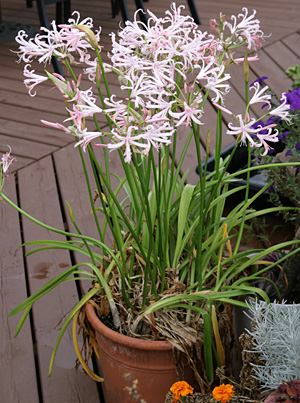
Nerine is a genus of 25-30 species of bulbs native to South Africa. These plants in the amaryllis family (Amaryllidaceae) have been widely hybridized and are now cultivated world wide. The common names Guernsey lily or spider lily are sometimes applied to the entire genus.
N. bowdenii, from the KwaZulu-Natal Drakensberg and Eastern Cape Province, is a summer-growing species which flowers late in the season and is deciduous in winter. It is similar to pink surprise lily (Lycoris squamigera), but is not as hardy as that plant, surviving outdoors only into zone 7. It has been awarded the Royal Horticultural Society’s Award of Garden Merit (AGM).
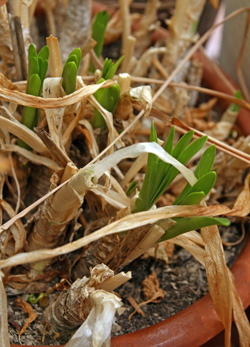
In late winter or early spring, several strap-shaped leaves are produced from the bulb. The ½ to 1″ wide medium- green leaves are not very stiff, so tend to flop over when they get longer. The plant remains in leaf through the summer. In late summer or early fall, the leaves will begin to gradually die back.
Late in the season, just when you think nothing is going to happen this year and often before all the foliage has died back, each bulb produces a single, leafless 1-2 foot tall scape with a cluster of flowers at the top. There are four to 10 funnel-shaped flowers in each umbel. The individual flowers are about 2″ inches across, with six narrow, strap-like recurved petals with wavy-edges and prominent pink stamens and anthers. This species blooms in shades of pink from very pale to almost neon, and occasionally white. There are a few named cultivars, including ‘Alba’ (white), ‘Mark Fenwick’ and ‘Pink Triumph’ (larger flowers) but they may not be readily available.

The faintly scented inflorescences make great cut flowers. But if not deadheaded or used as cut flowers, the plants may produce large, round green seeds.

Because these plants will not survive Wisconsin winters and also bloom late in the fall (often well after regular frosts), they are best grown as container plants. Use a rich, well-drained growing medium, and set the bulbs with the neck well above the soil level so only about half the bulb is buried. Place the bulbs 2-3 inches apart. The bulbs can be left in the same pot for several years, as they bloom best when crowded. Water freely when the plants have foliage but do not water when the bulbs are dormant. Nerines do not need much fertilization, so apply dilute fertilizer only once or twice a season when the leaves are actively growing. Place the container in full sun during the growing season. It can be moved to another location once in bloom, if desired. Although they will tolerate a light frost, it is best to move the plants indoors (at least temporarily during cold nights) to prevent damage to the flowers. Once the bulbs go dormant, the pot can be stored in a cool basement until spring without any water.
Nerine is easy to propagate by division after flowering or when dormant, although they bloom best when crowded so regular division is not necessary or recommended. Bulbs will often delay blooming for a year after being divided. Plants will also set viable seed if the flowers are pollinated. The large, fleshy seeds should be sown when fresh; they will germinate in storage. The seedlings can remain in leaf through the winter and following growing season. It will take 3-4 years before the seedlings will bloom.

N. sarniensis is another species that is sometimes available. It also blooms in the late summer or fall, but loses all its leaves in midsummer. It then produces new leaves as the flower stalks are produced and remains in leaf through the winter (making it harder to keep over the winter than the deciduous N. bowdenii that goes dormant in winter). These two species have been used extensively in breeding many of the new hybrids.
– Susan Mahr, University of Wisconsin – Madison





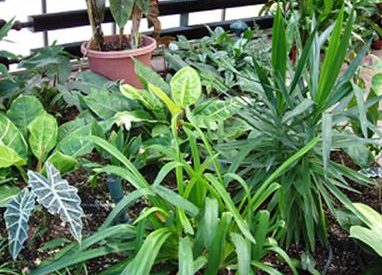 Houseplant Care
Houseplant Care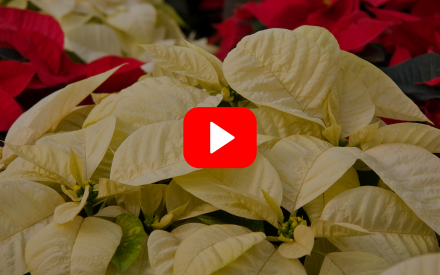 ▶ WATCH: Maintaining Your Festive Houseplants
▶ WATCH: Maintaining Your Festive Houseplants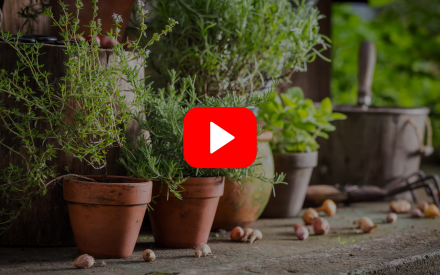 ▶ WATCH: Bringing the Garden Inside
▶ WATCH: Bringing the Garden Inside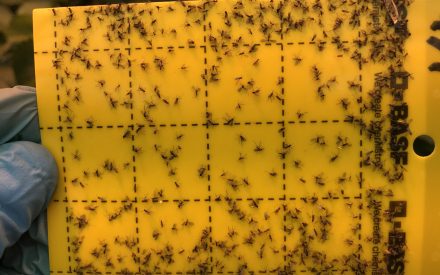 Fungus Gnats on Houseplants
Fungus Gnats on Houseplants


